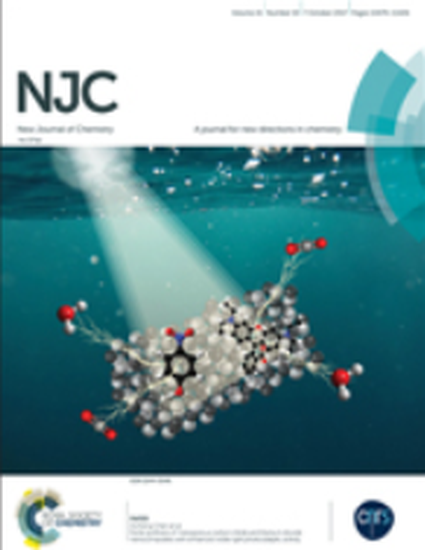
Article
Synthesis of Tailored Hydrodipyrrins and Their Examination in Directed Routes to Bacteriochlorins and Tetradehydrocorrins
New Journal of Chemistry
(2017)
Abstract
The chemistry of reduced tetrapyrroles is less developed than that of the fully unsaturated (porphyrin) analogues, yet is of comparable importance given the natural roles of hydroporphyrins (e.g., chlorophylls, bacteriochlorophylls) and contracted hydroporphyrins (cobalamin). The self-condensation of a 1-(dimethoxymethyl)-2,3-dihydro-3,3-dimethyldipyrrin (termed a dihydrodipyrrin-acetal) affords the corresponding bacteriochlorin or tetradehydrocorrin with the outcome potentially controllable by choice of the catalysis conditions. The ability to install distinct patterns of substituents about the perimeter of the synthetic macrocycles is essential for biomimetic studies. Here, 18 new target (and 9 intermediate) hydrodipyrrins encompassing a range of dipyrrin saturation levels (dihydro, tetrahydro, hexahydro) and equipped with diverse α-pyrrole (-H, -SMe, -SPh, -Br, -Me, -CO2R, dioxaborolanyl) and α-pyrroline (methyl, formyl, dimethoxymethyl, oxo, methoxy, methylthio, iminomethyl, ethoxycarbonylvinyl, dicyanovinyl) substituents have been prepared and examined in the directed synthesis of bacteriochlorins. The routes – inspired by a directed route to chlorins – rely on condensation of two hydrodipyrrins to produce a hydrobilin followed by ring closure to form the macrocycle. Four new unsymmetrically substituted bacteriochlorins were obtained in very low yields; as an offshoot, efficient routes to three new tetradehydrocorrins (nickel chelates) were discovered, including two B,D-tetradehydrocorrins (pyrroline–pyrrole A–D ring junction) and one B,C-tetradehydrocorrin (pyrroline–pyrroline A–D ring junction). Taken together, this study deepens our understanding of the chemistry of hydrodipyrrins and hydrobilins as precursors to hydroporphyrins.
Disciplines
Publication Date
October 7, 2017
DOI
10.1039/C7NJ01892D
Citation Information
Shaofei Zhang, Muthyala Nagarjuna Reddy, Olga Mass, Han-Je Kim, et al.. "Synthesis of Tailored Hydrodipyrrins and Their Examination in Directed Routes to Bacteriochlorins and Tetradehydrocorrins" New Journal of Chemistry Iss. 19 (2017) Available at: http://works.bepress.com/olga-mass/2/
